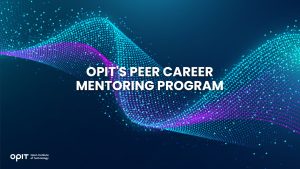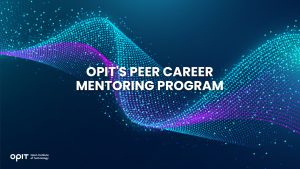

The journey towards building ethical AI is challenging, yet it also presents an opportunity to shape a future where technology serves as a force for good
By Riccardo Ocleppo, March 14th 2024
Source here:eCampus News
In the exponentially-evolving realm of artificial intelligence (AI), concerns surrounding AI bias have risen to the forefront, demanding a collective effort towards fostering ethical AI practices. This necessitates understanding the multifaceted causes and potential ramifications of AI bias, exploring actionable solutions, and acknowledging the key role of higher education institutions in this endeavor.
Unveiling the roots of AI bias
AI bias is the inherent, often systemic, unfairness embedded within AI algorithms. These biases can stem from various sources, with data used to train AI models often acting as the primary culprit. If this data reflects inequalities or societal prejudices, it can unintentionally translate into skewed algorithms perpetuating those biases. But bias can also work the other way around: take the recent case of bias by Google Gemini, where the generative AI created by Google, biased by the necessity of more inclusiveness, actually generated responses and images that have nothing to do with the reality it was prompted to depict.
Furthermore, the complexity of AI models, frequently characterized by intricate algorithms and opaque decision-making processes, compounds the issue. The very nature of these models makes pinpointing and rectifying embedded biases a significant challenge.
Mitigating the impact: Actionable data practices
Actionable data practices are essential to address these complexities. Ensuring diversity and representativeness within training datasets is a crucial first step. This involves actively seeking data encompassing a broad spectrum of demographics, cultures, and perspectives, ensuring the AI model doesn’t simply replicate existing biases.
In conjunction with diversifying data, rigorous testing across different demographic groups is vital. Evaluating the AI model’s performance across various scenarios unveils potential biases that might otherwise remain hidden. Additionally, fostering transparency in AI algorithms and their decision-making processes is crucial. By allowing for scrutiny and accountability, transparency empowers stakeholders to assess whether the AI functions unbiasedly.
The ongoing journey of building ethical AI
Developing ethical AI is not a one-time fix; it requires continuous vigilance and adaptation. This ongoing journey necessitates several key steps:
- Establishing ethical guidelines: Organizations must clearly define ethical standards for AI development and use, reflecting fundamental values such as fairness, accountability, and transparency. These guidelines serve as a roadmap, ensuring AI projects align with ethical principles.
- Creating multidisciplinary teams: Incorporating diverse perspectives into AI development is crucial. Teams of technologists, ethicists, sociologists, and individuals representing potentially impacted communities can anticipate and mitigate biases through broader perspectives.
- Fostering an ethical culture: Beyond establishing guidelines and assembling diverse teams, cultivating an organizational culture prioritizes ethical considerations in all AI projects is essential. Embedding ethical principles into an organization’s core values and everyday practices ensures ethical considerations are woven into the very fabric of AI development.
The consequences of unchecked bias
Ignoring the potential pitfalls of AI bias can lead to unintended and often profound consequences, impacting various aspects of our lives. From reinforcing social inequalities to eroding trust in AI systems, unchecked bias can foster widespread skepticism and resistance toward technological advancements.
Moreover, biased AI can inadvertently influence decision-making in critical areas such as healthcare, employment, and law enforcement. Imagine biased algorithms used in loan applications unfairly disadvantaging certain demographics or in facial recognition software incorrectly identifying individuals, potentially leading to unjust detentions. These are just a few examples of how unchecked AI bias can perpetuate inequalities and create disparities.
The role of higher education in fostering change
Higher education institutions have a pivotal role to play in addressing AI bias and fostering the development of ethical AI practices:
- Integrating ethics into curricula: By integrating ethics modules into AI and computer science curricula, universities can equip future generations of technologists with the necessary tools and frameworks to identify, understand, and combat AI bias. This empowers them to develop and deploy AI responsibly, ensuring their creations are fair and inclusive.
- Leading by example: Beyond educating future generations, universities can also lead by example through their own research initiatives. Research institutions are uniquely positioned to delve into the complex challenges of AI bias, developing innovative solutions for bias detection and mitigation. Their research can inform and guide broader efforts towards building ethical AI.
- Fostering interdisciplinary collaboration: The multifaceted nature of AI bias necessitates a collaborative approach. Universities can convene experts from various fields, including computer scientists, ethicists, legal scholars, and social scientists, to tackle the challenges of AI bias from diverse perspectives. This collaborative spirit can foster innovative and comprehensive solutions.
- Facilitating public discourse: Universities, as centers of knowledge and critical thinking, can serve as forums for public discourse on ethical AI. They can facilitate conversations between technologists, policymakers, and the broader community through dialogues, workshops, and conferences. This public engagement is crucial for raising awareness, fostering understanding, and promoting responsible development and deployment of AI.
Several universities and higher education institutions, wallowing in the above principles, have created technical degrees in artificial intelligence shaping the artificial intelligence professionals of tomorrow by combining advanced technical skills in AI areas such as machine learning, computer vision, and natural language processing while developing in each one of them ethical and human-centered implications.
Also, we are seeing prominent universities throughout the globe (more notably, Yale and Oxford) creating research departments on AI and ethics.
Conclusion
The journey towards building ethical AI is challenging, yet it also presents an opportunity to shape a future where technology serves as a force for good. By acknowledging the complex causes of AI bias, adopting actionable data practices, and committing to the ongoing effort of building ethical AI, we can mitigate the unintended consequences of biased algorithms. With their rich reservoir of knowledge and expertise, higher education institutions are at the forefront of this vital endeavor, paving the way for a more just and equitable digital age.
Related posts

Source:
- Raconteur, published on November 06th, 2025
Many firms have conducted successful Artificial Intelligence (AI) pilot projects, but scaling them across departments and workflows remains a challenge. Inference costs, data silos, talent gaps and poor alignment with business strategy are just some of the issues that leave organisations trapped in pilot purgatory. This inability to scale successful experiments means AI’s potential for improving enterprise efficiency, decision-making and innovation isn’t fully realised. So what’s the solution?
Although it’s not a magic bullet, an AI operating model is really the foundation for scaling pilot projects up to enterprise-wide deployments. Essentially it’s a structured framework that defines how the organisation develops, deploys and governs AI. By bringing together infrastructure, data, people, and governance in a flexible and secure way, it ensures that AI delivers value at scale while remaining ethical and compliant.
“A successful AI proof-of-concept is like building a single race car that can go fast,” says Professor Yu Xiong, chair of business analytics at the UK-based Surrey Business School. “An efficient AI technology operations model, however, is the entire system – the processes, tools, and team structures – for continuously manufacturing, maintaining, and safely operating an entire fleet of cars.”
But while the importance of this framework is clear, how should enterprises establish and embed it?
“It begins with a clear strategy that defines objectives, desired outcomes, and measurable success criteria, such as model performance, bias detection, and regulatory compliance metrics,” says Professor Azadeh Haratiannezhadi, co-founder of generative AI company Taktify and professor of generative AI in cybersecurity at OPIT – the Open Institute of Technology.
Platforms, tools and MLOps pipelines that enable models to be deployed, monitored and scaled in a safe and efficient way are also essential in practical terms.
“Tools and infrastructure must also be selected with transparency, cost, and governance in mind,” says Efrain Ruh, continental chief technology officer for Europe at Digitate. “Crucially, organisations need to continuously monitor the evolving AI landscape and adapt their models to new capabilities and market offerings.”
An open approach
The most effective AI operating models are also founded on openness, interoperability and modularity. Open source platforms and tools provide greater control over data, deployment environments and costs, for example. These characteristics can help enterprises to avoid vendor lock-in, successfully align AI to business culture and values, and embed it safely into cross-department workflows.
“Modularity and platformisation…avoids building isolated ‘silos’ for each project,” explains professor Xiong. “Instead, it provides a shared, reusable ‘AI platform’ that integrates toolchains for data preparation, model training, deployment, monitoring, and retraining. This drastically improves efficiency and reduces the cost of redundant work.”
A strong data strategy is equally vital for ensuring high-quality performance and reducing bias. Ideally, the AI operating model should be cloud and LLM agnostic too.
“This allows organisations to coordinate and orchestrate AI agents from various sources, whether that’s internal or 3rd party,” says Babak Hodjat, global chief technology officer of AI at Cognizant. “The interoperability also means businesses can adopt an agile iterative process for AI projects that is guided by measuring efficiency, productivity, and quality gains, while guaranteeing trust and safety are built into all elements of design and implementation.”
A robust AI operating model should feature clear objectives for compliance, security and data privacy, as well as accountability structures. Richard Corbridge, chief information officer of Segro, advises organisations to: “Start small with well-scoped pilots that solve real pain points, then bake in repeatable patterns, data contracts, test harnesses, explainability checks and rollback plans, so learning can be scaled without multiplying risk. If you don’t codify how models are approved, deployed, monitored and retired, you won’t get past pilot purgatory.”
Of course, technology alone can’t drive successful AI adoption at scale: the right skills and culture are also essential for embedding AI across the enterprise.
“Multidisciplinary teams that combine technical expertise in AI, security, and governance with deep business knowledge create a foundation for sustainable adoption,” says Professor Haratiannezhadi. “Ongoing training ensures staff acquire advanced AI skills while understanding associated risks and responsibilities.”
Ultimately, an AI operating model is the playbook that enables an enterprise to use AI responsibly and effectively at scale. By drawing together governance, technological infrastructure, cultural change and open collaboration, it supports the shift from isolated experiments to the kind of sustainable AI capability that can drive competitive advantage.
In other words, it’s the foundation for turning ambition into reality, and finally escaping pilot purgatory for good.

The Open Institute of Technology (OPIT) is the perfect place for those looking to master the core skills and gain the fundamental knowledge they need to enter the exciting and dynamic environment of the tech industry. While OPIT’s various degrees and courses unlock the doors to numerous careers, students may not know exactly which line of work they wish to enter, or how, exactly, to take the next steps.
That’s why, as well as providing exceptional online education in fields like Responsible AI, Computer Science, and Digital Business, OPIT also offers an array of career-related services, like the Peer Career Mentoring Program. Designed to provide the expert advice and support students need, this program helps students and alumni gain inspiration and insight to map out their future careers.
Introducing the OPIT Peer Career Mentoring Program
As the name implies, OPIT’s Peer Career Mentoring Program is about connecting students and alumni with experienced peers to provide insights, guidance, and mentorship and support their next steps on both a personal and professional level.
It provides a highly supportive and empowering space in which current and former learners can receive career-related advice and guidance, harnessing the rich and varied experiences of the OPIT community to accelerate growth and development.
Meet the Mentors
Plenty of experienced, expert mentors have already signed up to play their part in the Peer Career Mentoring Program at OPIT. They include managers, analysts, researchers, and more, all ready and eager to share the benefits of their experience and their unique perspectives on the tech industry, careers in tech, and the educational experience at OPIT.
Examples include:
- Marco Lorenzi: Having graduated from the MSc in Applied Data Science and AI program at OPIT, Marco has since progressed to a role as a Prompt Engineer at RWS Group and is passionate about supporting younger learners as they take their first steps into the workforce or seek career evolution.
- Antonio Amendolagine: Antonio graduated from the OPIT MSc in Applied Data Science and AI and currently works as a Product Marketing and CRM Manager with MER MEC SpA, focusing on international B2B businesses. Like other mentors in the program, he enjoys helping students feel more confident about achieving their future aims.
- Asya Mantovani: Asya took the MSc in Responsible AI program at OPIT before taking the next steps in her career as a Software Engineer with Accenture, one of the largest IT companies in the world, and a trusted partner of the institute. With a firm belief in knowledge-sharing and mutual support, she’s eager to help students progress and succeed.
The Value of the Peer Mentoring Program
The OPIT Peer Career Mentoring Program is an invaluable source of support, inspiration, motivation, and guidance for the many students and graduates of OPIT who feel the need for a helping hand or guiding light to help them find the way or make the right decisions moving forward. It’s a program built around the sharing of wisdom, skills, and insights, designed to empower all who take part.
Every student is different. Some have very clear, fixed, and firm objectives in mind for their futures. Others may have a slightly more vague outline of where they want to go and what they want to do. Others live more in the moment, focusing purely on the here and now, but not thinking too far ahead. All of these different types of people may need guidance and support from time to time, and peer mentoring provides that.
This program is also just one of many ways in which OPIT bridges the gaps between learners around the world, creating a whole community of students and educators, linked together by their shared passions for technology and development. So, even though you may study remotely at OPIT, you never need to feel alone or isolated from your peers.
Additional Career Services Offered by OPIT
The Peer Career Mentoring Program is just one part of the larger array of career services that students enjoy at the Open Institute of Technology.
- Career Coaching and Support: Students can schedule one-to-one sessions with the institute’s experts to receive insightful feedback, flexibly customized to their exact needs and situation. They can request resume audits, hone their interview skills, and develop action plans for the future, all with the help of experienced, expert coaches.
- Resource Hub: Maybe you need help differentiating between various career paths, or seeing where your degree might take you. Or you need a bit of assistance in handling the challenges of the job-hunting process. Either way, the OPIT Resource Hub contains the in-depth guides you need to get ahead and gain practical skills to confidently move forward.
- Career Events: Regularly, OPIT hosts online career event sessions with industry experts and leaders as guest speakers about the topics that most interest today’s tech students and graduates. You can join workshops to sharpen your skills and become a better prospect in the job market, or just listen to the lessons and insights of the pros.
- Internship Opportunities: There are few better ways to begin your professional journey than an internship at a top-tier company. OPIT unlocks the doors to numerous internship roles with trusted institute partners, as well as additional professional and project opportunities where you can get hands-on work experience at a high level.
In addition to the above, OPIT also teams up with an array of leading organizations around the world, including some of the biggest names, including AWS, Accenture, and Hype. Through this network of trust, OPIT facilitates students’ steps into the world of work.
Start Your Study Journey Today
As well as the Peer Career Mentoring Program, OPIT provides numerous other exciting advantages for those who enroll, including progressive assessments, round-the-clock support, affordable rates, and a team of international professors from top universities with real-world experience in technology. In short, it’s the perfect place to push forward and get the knowledge you need to succeed.
So, if you’re eager to become a tech leader of tomorrow, learn more about OPIT today.
Have questions?
Visit our FAQ page or get in touch with us!
Write us at +39 335 576 0263
Get in touch at hello@opit.com
Talk to one of our Study Advisors
We are international
We can speak in:


